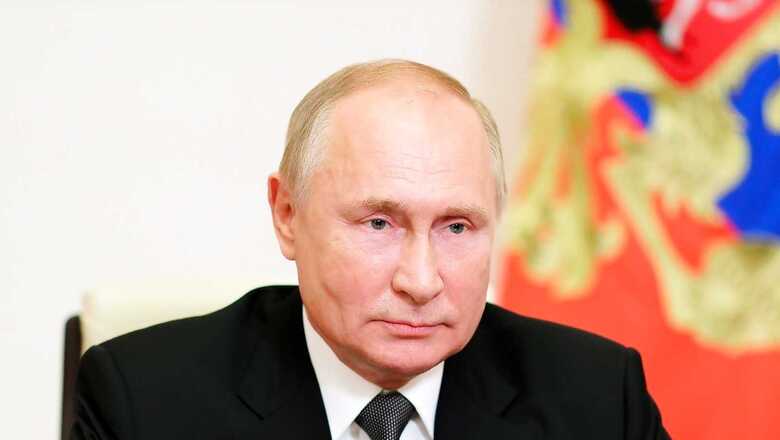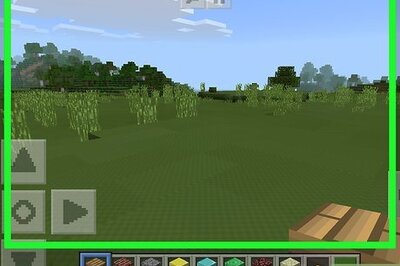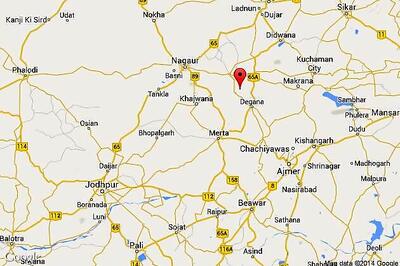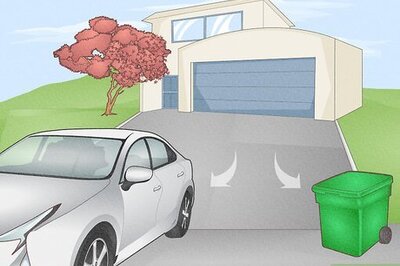
views
The Sino-Soviet split was one major reason that helped the rival nations win over the USSR in the Cold War. Putinism is reversing that split.
His is a meticulously crafted image of a KGB operative, a macho man – the one who fights a Siberian tiger; poses for photographers showing butterfly swimming technique; bares his abs the way film stars and models do; and makes Anna Chapmen, the Russian spy deported after his arrest in the United States, one of his party members and puts a whole newsmaking machinery into relaying it. The image told the ordinary Russians that President Vladimir Putin was the answer to the problems the world’s largest country (geographically) was facing. Putin’s mantra to the ordinary Russians was the message to create a superpower Russia like the USSR was.
Putin worked in the KGB’s Foreign Intelligence Committee. In 1991, he left the KGB to start his political career in Russia after the dissolution of USSR. In 1996, he joined then Russian President Boris Yeltsin’s team as the first deputy manager and saw a meteoric rise that coincided with the worsening economic and social unrest in the country. Putin was appointed as Russia’s Prime Minister in August 1999. The same year, Yeltsin resigned abruptly on December 31, 1999, making Putin the acting President. On March 26, 2000, Putin was formally elected as the President of Russia.
PUTINISM AND PUTIN’S RUSSIA
After the collapse of the Soviet Union, Russia needed two things on priority – a sustainable economy, open to the globe, and solid grounding for democracy – away from the communist rule. Yeltsin promised to deliver on these. But he failed in the end. Yeltsin’s term could be defined as a chaotic reign when Russia saw policy paralysis, highly unequal distribution of wealth to some oligarchs after the USSR collapse, communists trying to make a comeback, corruption and gross administrative incompetence.
Russia, it seems, failed to take even the initial steps of democracy.
Putin got this Russia from Yeltsin and he decided to go the USSR way to stabilise the country under his hold. When he took oath in May 2000, his message to common Russians was – “We have a common goal: a strong Russia.”
Putin decided to make his own Russia, giving it the type of stability seen in the USSR, under one party and one head of the state.
Earlier, there was a hardcore communist regime in the USSR. Now, there is pseudo-democracy in the Russia ruled by Putin and his United Russia Party. Something that analysts call Putinism or Putin’s ideas and actions to shape government authority, nationalism and conservatism, all mixed with state capitalism, similar to the USSR. It is an autocracy that is personalist, with a president who appointed a 27-year-old Playboy playmate Maria Kozhevnikova as one of his MPs.
Since his coming to political prominence in 1999, Putin has tightly controlled the Russian society and mainstream media. Thanks to the oil economy, Russia saw good days from 2000 to 2008. Oil pumped in money and economy did well. Russians saw relief after a decade of chaos under Yeltsin, but for the economy to grow stronger for the days ahead, Russia needed fundamental reforms in its industrial and manufacturing policies.
Something that was not delivered and with global recession spreading in 2008, Russia was back to square one. The oil economy started to collapse. Gradually, things worsened. Corruption again became endemic, hitting the common public. Dreams of living in a developed Russia once again became threadbare.
Anti-incumbency was thus naturally bound to grow.
THE PHASE OF UNREST
A collapsing economy only made democratic voices more vocal, with many not ready to accept the continued run of Putin. Awareness efforts by many political bloggers led by Alexei Navalny, Russia’s most popular political blogger, lawyer and anti-corruption activist who had given the slogan ‘the Party of Swindlers and Thieves’ for Vladimir Putin’s United Russia Party, was then seen as the potential threat to Putin’s iron grip over Russia. Navalny led protests across Russia in the aftermath of the Arab Spring and mobilized masses for ‘Russia without Putin’ protest rallies, but in the end failed to stop Putin.
CONSTITUTION AS PUTIN WANTS IT
Putin was not ready to leave. He had completed two terms as the Russian President and could not continue for the third term as restricted by the Russian Constitution. So he took an alternative road. He became the country’s Prime Minister in 2008, coalescing power with his position, while installing a figurehead president in Dmitry Medvedev.
Also, as Russia’s constitution enacted in 1993 allowed only two consecutive four-year terms to a president, 2008 saw another change to help Putin in the future – the term of the President was to be six years for the next president assuming office in 2012. Putin again came back in 2012 as the Russian President, after suppressing the mass protests. The opposition in Russia alleged the election was rigged in Putin’s favour.
2013 MOSCOW MAYORAL POLLS
Navalny decided to fight the Moscow mayoral polls in July 2013, despite being convicted for embezzlement. He appealed against his conviction and with a growing number of protesters coming in his support, the Russian court allowed him to fight the poll pending his appeal. It was then seen as a move done under the Kremlin’s pressure to gauge public mood. Though Putin’s man won the polls, Navalny got over 27% votes. In Russia’s electoral history of rigged polls, it was a jolt for Putin as Navalny had no access to media outlets and he had no funding.
2014 GAVE PUTIN A WAY OUT
Annexing Crimea was an important ploy that diverted Russian population’s attention from growing economic failures. The year saw Ukrainian President Viktor Yanukovych, a pro-Russia voice, deposed and forced to flee the country. Yanukovych had rejected a deal for greater integration with the European Union (EU), inviting mass protests in the country. The movement was supported by the US and European countries. Russia suddenly lost influence in a country that was once the most important part of the USSR after Russia.
By humiliating Ukraine while snatching Crimea from it, Putin won some support back home. Russia also supported pro-Russian separatist rebels in eastern Ukraine and Putin once crossed the border to help the losing rebels. His image of a Russian icon fighting back for Russia abroad eased the growing unrest against him. The next stage was silencing the dissenting voices in the country.
THE IRON GRIP
Thanks to Putin, individuals and organizations can now be categorised as foreign agents by law agencies as per the rules. If you receive assistance from abroad or work in the interests of a foreign nation, you will be registered as a foreign agent. It carries a notion that you can be termed a spy – a practice widely adopted in Soviet days. If an internet platform criticises the state media, it can be fully or partially blocked. It covers political bloggers as well.
Navalny’s prison term can also be extended to 15 more years, as in a fresh criminal trial, he has been accused of embezzling funds for his anti-corruption organization. Navalny who called these charges politically motivated, is currently in jail, serving a 3.5 years’ prison term in a separate embezzlement charge.
Navalny was allegedly poisoned by Russian agents in August 2020 and taken to Germany for emergency medical treatment. He was later arrested when he returned to Moscow.
THE ROAD TO 2036
Putin retained the presidential office in 2018, for another six years, till 2024. As the Russian constitution doesn’t allow more than two consecutive terms to a president in office, what could be the way out?
The Russian government under Putin decided to go a step further this time. It amended the Russian constitution, allowing Putin two more terms till 2036, with Putin signing the related document in April 2021. It was done after a nationwide voting.
When the referendum was first proposed, extending Putin’s tenure was not a part of it, but later it was included. According to the Central Election Commission of Russia, 65% of eligible voters participated in the voting process that went on for a week, and 78% Russians voted for Putin to continue till 2036. Russia’s opposition, or whatever of it is left in the country, alleged that the Putin government rigged the voting process.
THE UKRAINE APPROACH IS SYMBOLIC OF PUTINISM
Former President of USSR Mikhail Gorbachev and Yeltsin wanted a stronger Russia, but with democratic means. Putinism felt democracy was not a possibility as seen during the difficult nine years of Yeltsin’s rule. Putin wanted a strong Russia that was stable, under a single power-centre, free from periodic disruptions of power changes. It means, for Putin, the path ahead was to kill the democratic spirits.
The 2014 Crimea annexation was Putinism’s first message to the world – of a strong Russia that could no longer be ignored.
The Sino-Soviet split was one major reason that helped the rival nations win over the USSR in the Cold War. Putinism is reversing that split. Putin is again allying with China to send a global message about Russia’s intent. The Bashar al-Assad regime in Syria could continue only because of Russia and China. Both of these countries even supported Taliban in Afghanistan last year.
Now, with a direct message that Ukraine must not join NATO, Putin is shaping his thoughts on international geopolitics finally – with an intent to make Russia a strong global voice like the USSR was, even if it means hypothesising about a possible nuclear war in a worst-case scenario in the Ukraine crisis.
Clearly, Putin wants for Russia the USSR sphere of influence over Europe back, and Ukraine may be first step in the direction.
Read all the Latest News here














Comments
0 comment